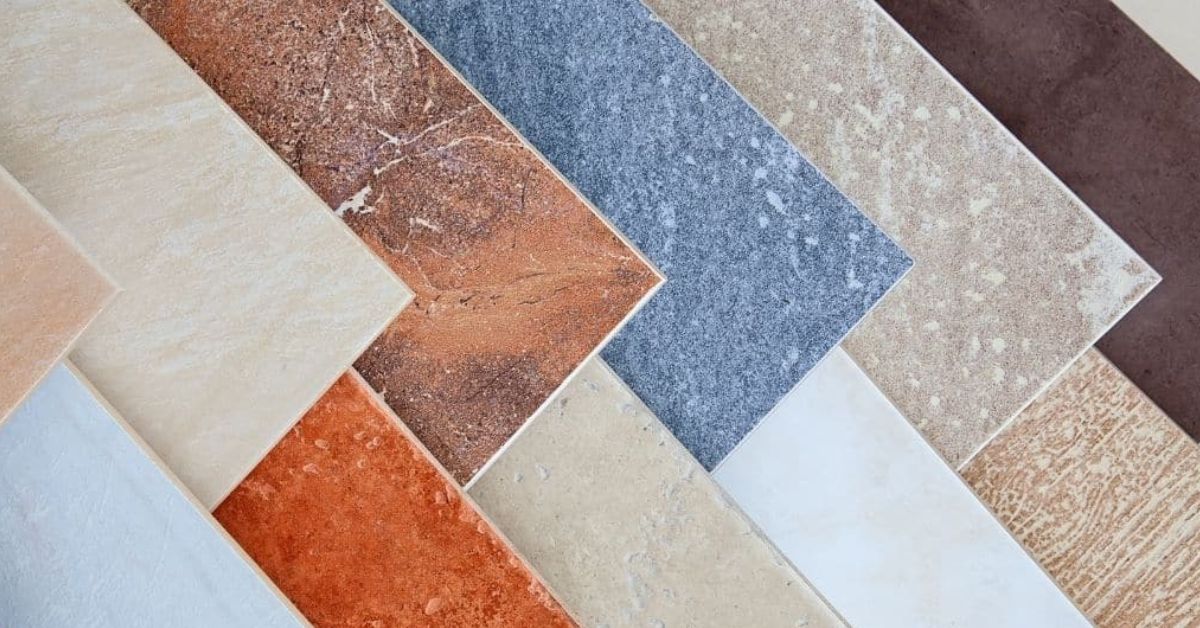Leading players like Commander Vitrified Pvt Ltd, operating under the brand Creanza, ship over 400 full container loads monthly. Raw materials sourced from Rajasthan, subsidized gas supplies, and proximity to major ports—Mundra, Kandla, and Pipavav—have enabled cost-effective scale. Mundra Port remains the preferred gateway, thanks to a mature ecosystem of Custom House Agents and third-party logistics handlers.
Large-format producers like Kajaria Ceramics (43.5 million sq.m/year) and RAK Ceramics (118 million sq.m/year) underline Morbi’s capacity to cater to global demand.
Export Performance: Sustaining Global Momentum
India’s ceramic tile exports surged from ₹17,550 crore in 2021 to ₹20,000 crore (USD 2.34 billion) in 2024. Porcelain tiles, comprising 72% of export volumes, recorded a 48% growth in 2023, totaling 423 million sq.m and ₹15,200 crore in value. The United States accounts for 60–70% of these exports, followed by Saudi Arabia and the UAE.
Sanitaryware exports also grew significantly—touching ₹3,375 crore (USD 395 million) in 2023, up from ₹2,250 crore in 2020, with Europe and North America as key destinations.
However, competition from China (holding 35% of global market share) and rising players like Vietnam and Turkey pose ongoing challenges, with India currently at 8%.
Logistics as a Competitive Enabler
Strategically located near Mundra and Kandla ports, Morbi benefits from 20–25% lower logistics costs. Approximately 1,500 containers leave the region daily. Coastal shipping improves reach to South India, while the Dedicated Freight Corridor (DFC), operational since 2023, has cut rail transit times by 40%.
Export turnaround to the Middle East now takes 7–10 days, while Europe-bound shipments require 18–22 days. Yet, global freight volatility has impacted operations—freight costs have risen 15% since 2022, and around 30% of MSME shipments faced delays in 2023.
To address this, the Gujarat Maritime Board has committed ₹500 crore (USD 58 million) for port upgrades by 2026, and a proposed Ceramic Export Facilitation Centre is expected to reduce customs clearance time by 20%.
A Thriving Ancillary and Industrial Ecosystem
Morbi’s industrial base extends beyond ceramics. It hosts a strong network of ancillary industries—paper, laminates, clocks, and LED manufacturing—that support packaging, design, and diversified employment. This ecosystem strengthens the region’s self-sufficiency and manufacturing resilience.
Sustainability and Tech-Driven Production
Morbi has embraced cutting-edge technology and environmental compliance. Over 200 units use digital inkjet printing for large-format slabs (1.2 × 3.6 m), rivaling Italian designs. Energy-efficient roller kilns with waste-heat recovery and AI-driven control systems have cut carbon emissions by 20%.
Sanitaryware leaders like Varmora and Senisto deploy low-energy tunnel kilns and high-pressure casting. Slurry-recycling has reduced water consumption by 30%, and solar energy now powers 25% of production. The Indian Council of Ceramic Tiles and Sanitaryware (ICCTAS) targets 50% renewable usage by 2027, while compliance with the National Clean Air Programme (NCAP) mandates a 40% drop in particulate emissions by 2025.
Challenges Ahead: Costs, Carbon, and Policy Shocks
Despite its growth, Morbi faces formidable headwinds. Natural gas, comprising 25–30% of production costs, rose 50% between 2021 and 2023, squeezing margins. The EU’s Carbon Border Adjustment Mechanism (CBAM), set to begin in 2026, could impact ₹2,250 crore worth of exports.
The US countervailing duty probe threatens Indian tiles that saw exports double from 19.8 million sq.m in 2021 to 36.6 million in 2023. On the domestic front, 70 per cent of tile demand comes from urban housing, while rural penetration lags below 20 per cent. Industry stakeholders are calling for a GST reduction from 18 per cent to 12 per cent to stimulate broader demand.
Looking Ahead: Towards a ₹1 Lakh Crore Industry
By 2027, Morbi aims to double its ceramic output and reach a turnover of ₹80,000 crore (USD 9.35 billion). The proposed Morbi Ceramic Park, featuring captive power plants, a dry port, and single-window clearances, targets an annual turnover of ₹1 lakh crore (USD 11.7 billion).
Government-backed schemes like PM Gati Shakti and the PLI Scheme (targeting ₹2,000 crore in investments by 2026) are expected to boost innovation in smart sanitaryware and large-format vitrified tiles. Digital trade platforms, blockchain-based tracking, and green energy adoption are set to drive transparency, efficiency, and competitiveness.
According to ICCTAS Chairman Rishi Kajaria, India’s global market share in ceramics could rise from 8% to 12% by 2030 as global supply chains shift from China.
Conclusion
Morbi’s evolution is a testament to India’s manufacturing ambition—blending scale, innovation, and sustainability. With supportive policies, infrastructure investments, and digital transformation, the town is poised to become a global export hub not just for ceramics, but for the broader Make in India vision. As it readies for the next leap, Morbi offers a blueprint for regional industrial clusters to thrive on the global stage.









